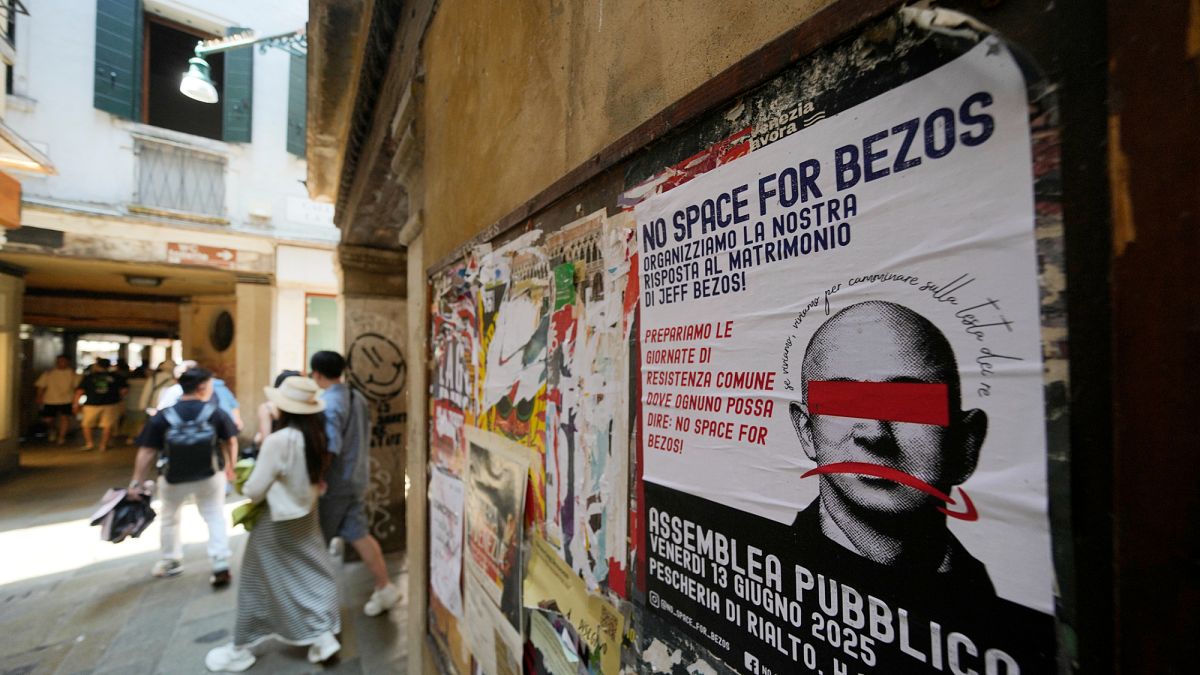World
Iran's covert nuclear agency found operating out of top space program launch sites
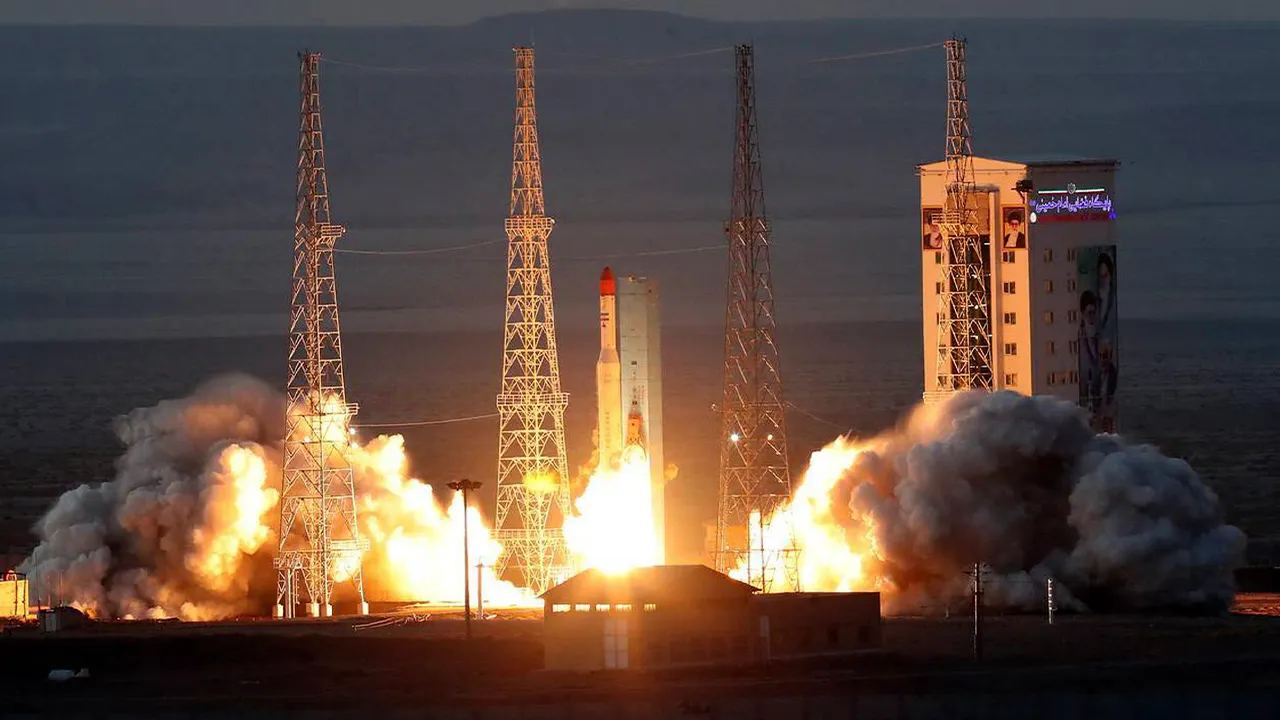
FIRST ON FOX: A covert agency within Iran’s Ministry of Defense and Armed Forces Logistics, tasked with the development of Iran’s nuclear program, has been found to be operating out of top sites used by Iran’s space program.
Iran has hidden elements of its nuclear development program under the guise of commercial enterprises, and it has been suspected of using its space program to develop technologies that could be applied to its nuclear weapons program.
Fox News Digital has learned that according to information obtained by sources embedded in the Iranian regime, evidence collected over several months shows that Iran’s chief nuclear development agency, the Organization of Defensive Innovation and Research, has been operating out two locations previously recognized as space development and launch sites.
A big banner depicting Iran’s Supreme Leader Ayatollah Ali Khamenei is placed next to a ballistic missile in Baharestan Square in Tehran, Iran, on September 26, 2024 on the sideline of an exhibition which marks the 44th anniversary of the start of the Iran-Iraq War. (Photo by Hossein Beris / Middle East Images / Middle East Images via AFP)
IRAN HIDING MISSILE, DRONE PROGRAMS UNDER GUISE OF COMMERCIAL FRONT TO EVADE SANCTIONS
“These reports, compiled from dozens of sources and thoroughly validated, indicate that in recent months, SPND has intensified its efforts to construct nuclear warheads at both the Shahrud and Semnan sites,” the National Council of Resistance of Iran (NCRI) said in a report exclusively obtained by Fox News Digital.
The information was obtained by individuals affiliated with the People’s Mojahedin Organization of Iran and given to the NCRI, an Iranian opposition organization based out of Washington, D.C., and Paris. The NCRI’s deputy director of its Washington, D.C., office, Alireza Jafarzadeh, was the first to disclose to the world information about Iran’s covert nuclear program in 2002.
One of the sites, the Shahroud Space Center, which has been suspected of being used by Iran’s Islamic Revolutionary Guard Corps (IRGC) to develop intermediate-range ballistic missiles, is also now reported to have “large-scale” SPND personnel operating out of it – a move Jafarzadeh described as a “significant red flag.”
The Shahroud Space Center caught global attention in 2022 when Iran announced it had developed the Ghaem-100 rocket, which could be used to send low-orbit satellites into space, but also as a ballistic missile with a range of nearly 1,400 miles, greater than what was previously achieved with the Qased rocket.
However, according to sources familiar with activity at the Shahroud Space Center “SPND’s experts are working on a nuclear warhead for the Ghaem100 solid-fuel missile with a range of more than 3,000 kilometers [more than 1,800 miles] and a mobile launch pad.”
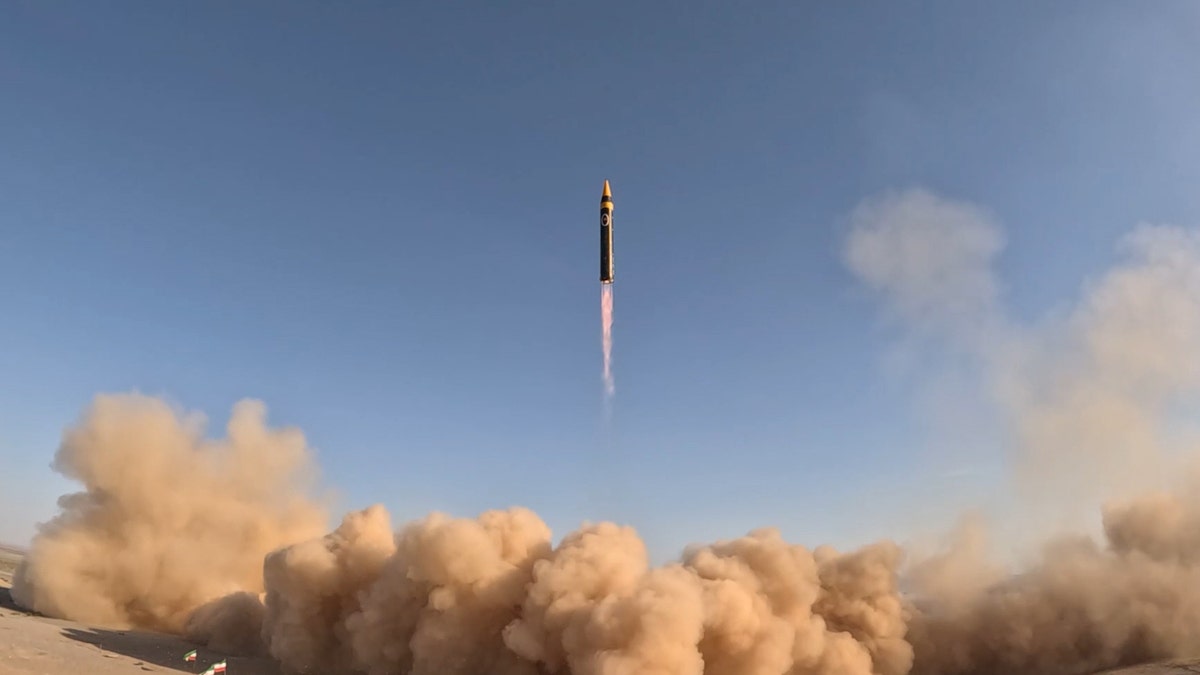
Iran’s medium-range ballistic missile called Hayber (Hurremshahr-4) is seen after the launch during the promotional program organized with the participation of high-ranking military officials in Tehran, Iran, on May 7, 2023. (Iranian Defense Ministry / Hanodut/Anadolu Agency via Getty Images)
IRAN EXPANDS WEAPONIZATION CAPABILITIES CRITICAL FOR EMPLOYING NUCLEAR BOMB
The site is under high security and personnel are apparently prohibited from driving on to the complex. Instead, they are required to park at a checkpoint at the entrance to the site, before being transported inside the complex by the IRGC.
“The Ghaem-100 missile, with a mobile launchpad that enhances its military capability, was produced by the IRGC Aerospace Force and copied from North Korean missiles,” the NCRI report said. “The production of the Ghaem missile was designed from the very beginning to carry a nuclear warhead. The IRGC Brigadier General Hassan Tehrani Moghaddam, the father of the IRGC’s missile program, personally pursued the project.”
It is unclear what level of nuclear payload the Ghaem-100 missile would be capable of carrying at the range of 1,800 miles, though this is still shy of the roughly 3,400 miles needed to be classified as an intercontinental missile.
The second site, located in the northern city of Semnan, the Imam Khomeini Spaceport – Iran’s first spaceport – made international headlines just last month when Tehran launched its heaviest-ever rocket into space carrying a payload of roughly 660 pounds, relying on a liquid propellant.
According to the NCRI report, Iran is using this technology to develop liquid-fuel propellants, like the Simorgh rocket with a range of more than 1,800 miles, used for launching heavier satellites into space – but with the capability of carrying nuclear warheads.

This photo released by the official website of the Iranian Defense Ministry on Friday, Dec. 6, 2024, shows the launching of Simorgh, or “Phoenix,” rocket at Iran’s Imam Khomeini Spaceport in rural Semnan province, Iran. (Iranian Defense Ministry via AP)
IRAN LAUNCHES ROCKET WITH HEAVIEST-EVER PAYLOAD INTO SPACE AMID HEIGHTENED CONCERN OVER NUCLEAR PROGRAM
Liquid fuel enables a missile to have greater propulsive thrust, power and control. Though it is heavier than solid fuel and requires more complex technologies.
“Creating a Space Command of the IRGC’s Aerospace Force has served to camouflage the development of nuclear warheads under the guise of launching satellites while additionally giving the regime independent communications necessary for guiding the nuclear warheads,” Jafarzadeh told Fox News Digital.
The International Atomic Energy Agency earlier this month warned that Iran has developed some 440 pounds of near-weapons grade uranium that has been enriched to the 60% purity threshold – shy of the 90% purity levels needed to develop a nuclear bomb.
Though only some 92 pounds of weapons-grade uranium is reportedly required to create one nuclear bomb, meaning Iran, if it further enriched its uranium, could possess enough material to develop five nuclear bombs.

The Foundation for Defense of Democracies has analyzed where Iran’s nuclear infrastructure is located as Israel mulls retaliatory attack. (Image provided by the Foundation for Defense of Democracies)
However, Jafarzadeh warned that the international community needs to be paying attention to Iran’s activities beyond enriching uranium.
“It is naïve to only focus on calculating the amount or purity of enriched uranium without concentrating on the construction of the nuclear bomb or its delivery system,” he said. “All are integral components of giving Iran’s mullahs an atomic bomb.”

World
DR Congo and Rwanda sign draft peace agreement

Provisional agreement aimed at ending fighting in eastern DRC expected to be formally signed on June 27.
The Democratic Republic of the Congo (DRC) and Rwanda have signed a provisional agreement aimed at stopping the conflict in eastern DRC, according to a joint statement from the two countries and the United States Department of State.
The development late on Wednesday in Washington, DC, came after “three days of constructive dialogue regarding political, security, and economic interests”, the statement said.
The draft agreement contains provisions on issues including disarmament, the integration of non-state armed groups and the return of refugees and internally displaced people.
Eastern DRC has been riven by conflict for decades, with armed groups competing for access to natural resources. Fighting in the region escalated in January when the Rwanda-backed M23 rebel group captured Goma, the mineral-rich area’s largest city. A few weeks later, the group seized the strategic town of Bukavu. Rwanda denies supporting the rebels.
Thousands of people have been killed in the region and hundreds of thousands of others displaced since the conflict intensified earlier this year.
Several of the parties to the conflict have been accused of carrying out human rights abuses.
In a report published in May, Amnesty International accused M23 of torturing and killing civilians.
“These acts violate international humanitarian law and may amount to war crimes,” Amnesty said at the time.
On Monday, Volker Turk, the UN high commissioner for human rights, said that the rebels, DRC troops and allied armed groups had all carried out human rights abuses.
Turk called on all sides “to commit immediately to a ceasefire and resume negotiations, and to respect international humanitarian and human rights law”.
The US hopes to bring an end to the fighting and to unlock billions of dollars of Western investment in the eastern DRC, which has large mineral reserves including cobalt, copper, gold and lithium.
US Secretary of State Marco Rubio has described the twin aims of peace and investment as a “win-win”.
As part of the diplomatic efforts, Massad Boulos, the US envoy to Africa, travelled to the DRC and Rwanda in April. During his visit, he urged Kigali to end its support for the M23 rebels.
Although the African countries have agreed to at least six truces since 2021, none has lasted.
Angola stepped down in March from its role as mediator, with the US and Qatar currently leading efforts to secure peace in the eastern DRC.
The draft agreement is due to be formally signed on June 27 by ministers from the DRC and Rwanda in the presence of Rubio.
World
Save the Dates: 4 Faith-Based Lifetime Movies, Roku’s Love Letter to Dingers and More

You will be redirected back to your article in seconds
ad
World
'Jewish Matchmaking' star living in Israel has hope amid conflicts with Hamas, Iran

NEWYou can now listen to Fox News articles!
Star of the hit Netflix show “Jewish Matchmaking,” Cindy Seni isn’t single anymore, but still talks to renowned matchmaker Aleeza Ben Shalom and lives in Israel.
From serving in the Israel Defense Forces (IDF) during COVID to living in Jerusalem through Oct. 7 and now the launch of Operation Rising Lion, Seni has seen a slew of historic events firsthand.
“It’s been a whirlwind,” Seni told Fox News Digital. “It feels like it’s a never-ending wound that we just keep trying to patch up and then it gets reopened again and it’s very, very difficult.”
Israel’s air defense targets Iranian missiles in the sky of Tel Aviv in Israel on June 16, 2025. (MATAN GOLAN/Middle East Images/AFP via Getty Images)
CAITLYN JENNER, STUCK IN ISRAEL AFTER IRAN STRIKE, POSTS PICTURES OF CHAOS AND SHELTER
Since the operation in Iran began, Israel has directed civilians to stay in bomb shelters or protected spaces for longer periods of time. Seni says it can be “anxiety-inducing” as one never knows how long the shelter-in-place order will last.
“It’s a question sometimes of an entire night or a few hours,” she said. “And thank God I have a safe room in my apartment, but a lot of people don’t, so they have to run and literally go out on the street at night in the middle with their kids and that’s very stressful.”
While she said that life in Israel right now is anxiety-inducing and scary, Seni also spoke about the resilience of the Israeli people, something she admires about the culture. Seni told Fox News Digital that people in Israel are living their lives not because they aren’t afraid or stressed, but rather in spite of that because they don’t have a choice. As Seni said, “they can’t stop.”
One resilient Israeli who has had a major impact on Seni’s life amid the chaos of war and conflict is her husband, Eldad Cohen.
“He’s a very, very resilient Israeli. He’s been through a lot of things,” she said. “He was injured as well in the army, and he has his own kind of, you grew up here during the Second Intifada in Jerusalem, and so he has this own resilience that really grounds me.”

“Jewish Matchmaking” star Cindy Seni and her now-husband Eldad Cohen at the Western Wall in Jerusalem, Israel. (@IsraelWithCindy/Instagram)
MIKE JOHNSON CALLS OFF ISRAEL TRIP AMID IRAN CONFLICT
Seni’s other love is spreading joy online through her Instagram account, “Israel with Cindy,” where she posts skits, photos and personal stories.
“So, ‘Israel with Cindy’ was really created as a way to spread joy within the community —the Jewish community — and it kind of really grew from there,” Seni said. “When situations like these happen, and the same thing with October 7th, I was faced with an extreme amount of hatred or just antisemitism. And I decided that my platform was going to be used in times of need to show antisemitism and expose hatred and trying to really find peace and a solution in the long-term. Humanizing Israelis, humanizing Jews, which I think is often lost in today’s society, sometimes in this polarized world.”
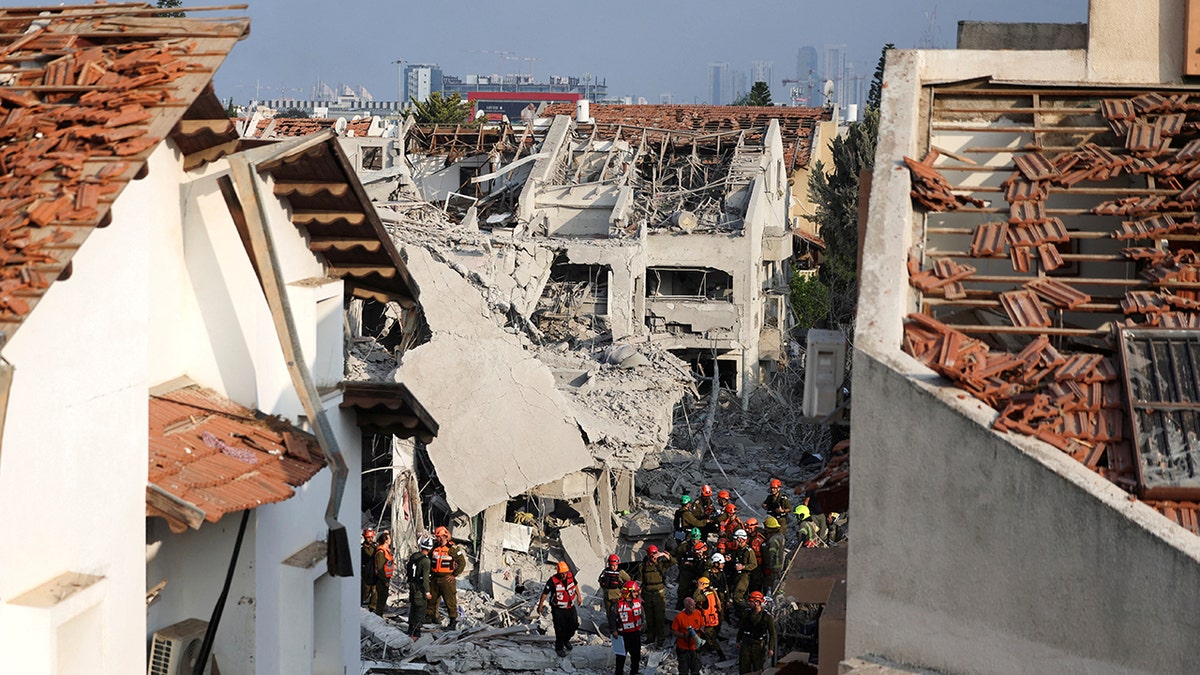
Rescue personnel work at an impact site following a missile attack from Iran on Israel, in Rishon LeZion, Israel, June 14, 2025. (REUTERS/Ronen Zvulun )
Israeli Prime Minister Benjamin Netanyahu’s office said that as of Wednesday 24 people had been killed and more than 800 injured in Iran’s retaliatory strikes. Additionally, 3,800 people have been evacuated from their homes.
While the numbers may be daunting, Seni says she has faith in the Israeli security forces and in God.
“I’m a believer in God, so, I believe that we have divine protection. I think that, God willing, everything will be okay.”
-

 Business1 week ago
Business1 week agoYale’s Endowment Selling Private Equity Stakes as Trump Targets Ivies
-

 Culture1 week ago
Culture1 week agoBarbara Holdridge, Whose Record Label Foretold Audiobooks, Dies at 95
-

 Science1 week ago
Science1 week agoIn Taxicab Geometry, Pi Equals 4 and Circles Aren’t Round
-

 News1 week ago
News1 week agoYosemite Bans Large Flags From El Capitan, Criminalizing Protests
-

 Culture1 week ago
Culture1 week agoA Murdered Journalist’s Unfinished Book About the Amazon Gets Completed and Published
-

 Culture1 week ago
Culture1 week agoHow Many Memorable Lines Can You Match Up With Their Novels?
-

 Business1 week ago
Business1 week agoWaymo halts service in downtown Los Angeles amid ICE protests
-
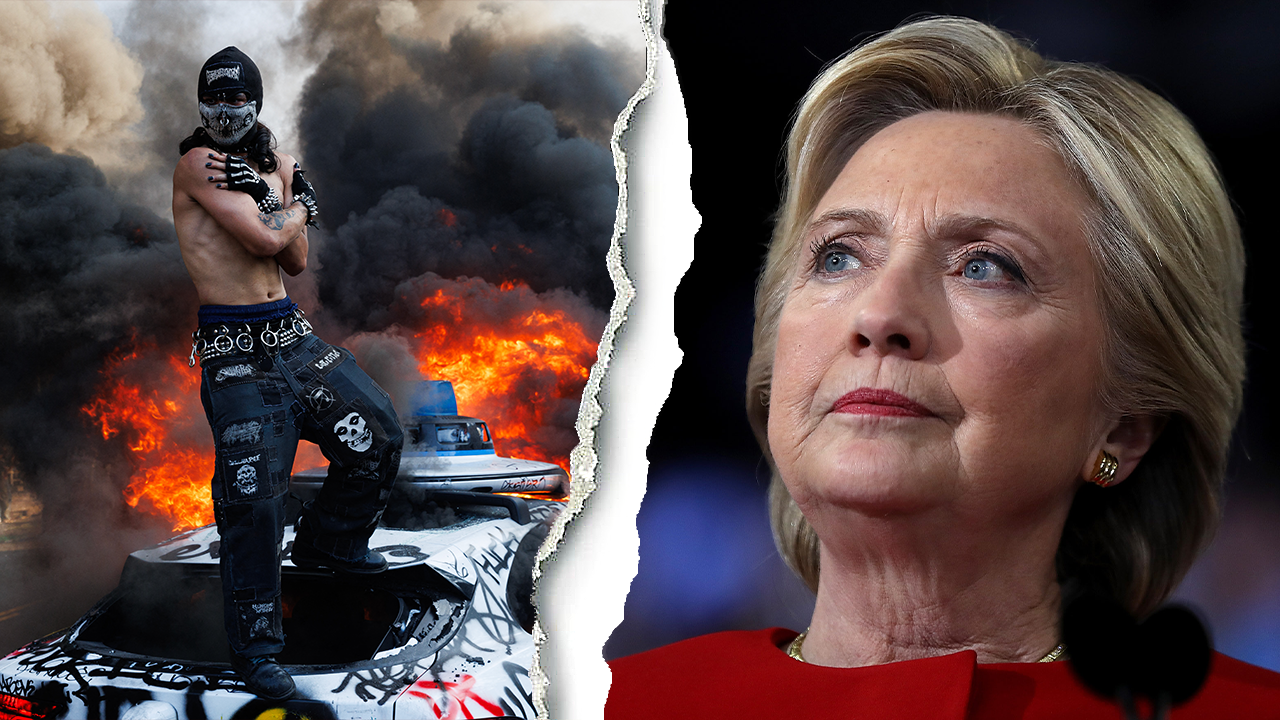
 Politics1 week ago
Politics1 week agoFox News Politics Newsletter: Hillary ‘Can’t Handle the Ratio'













